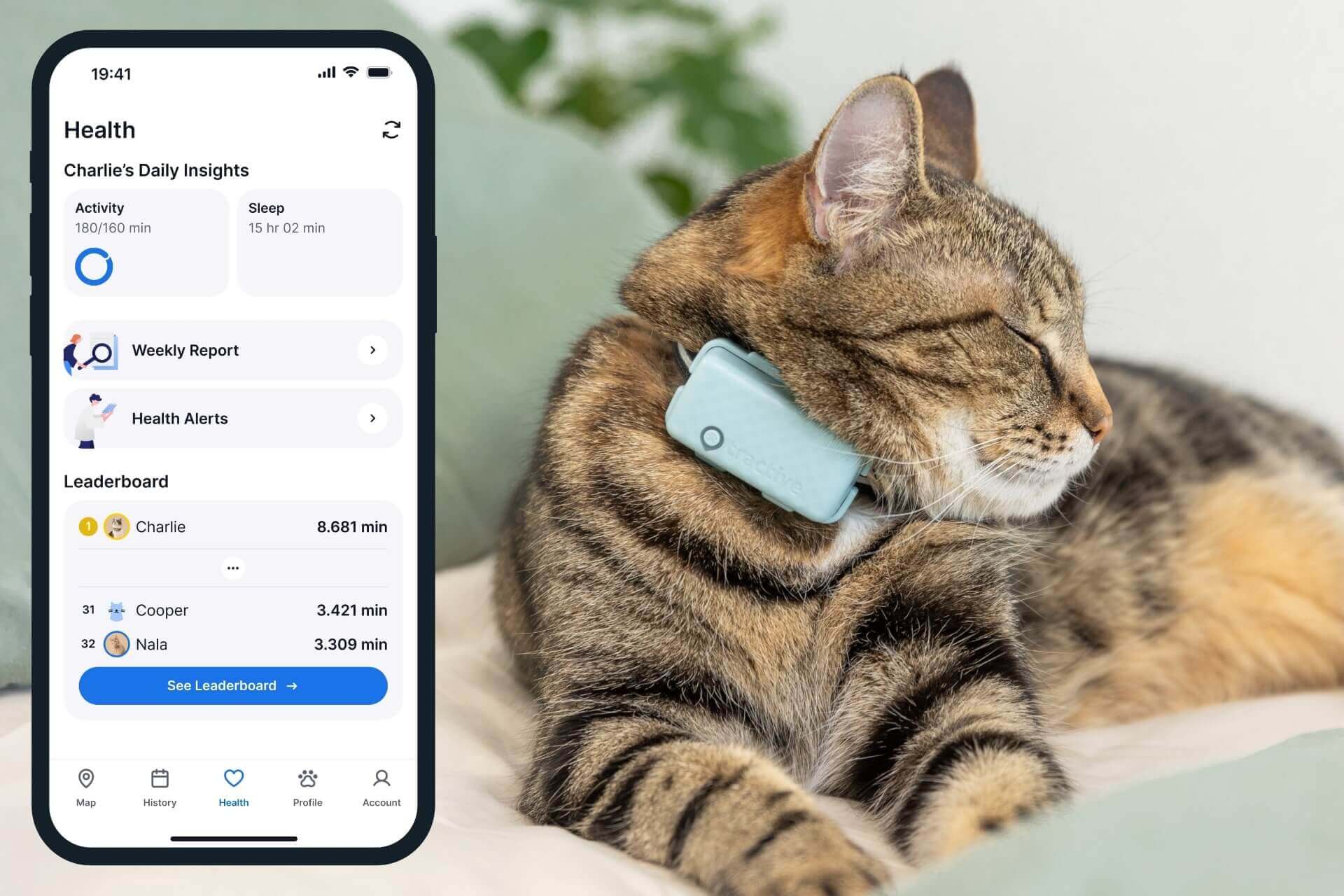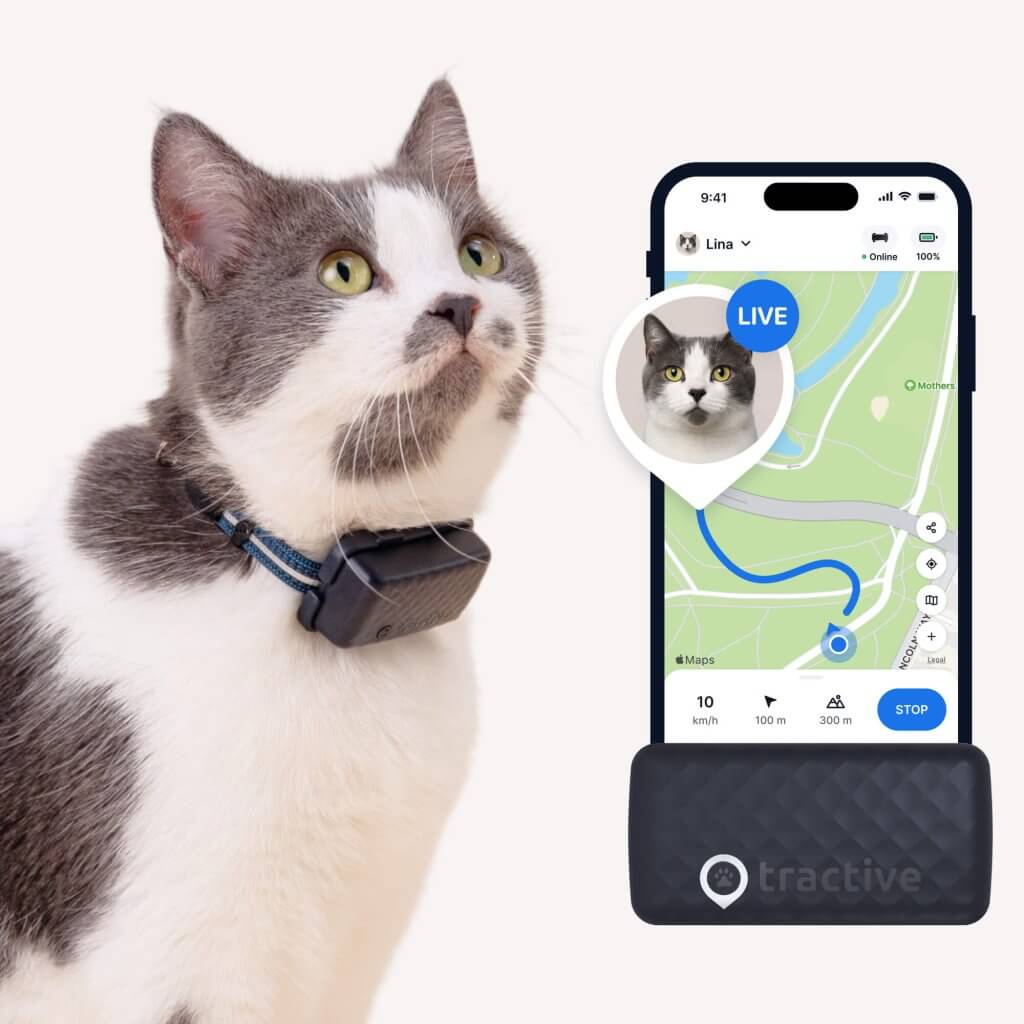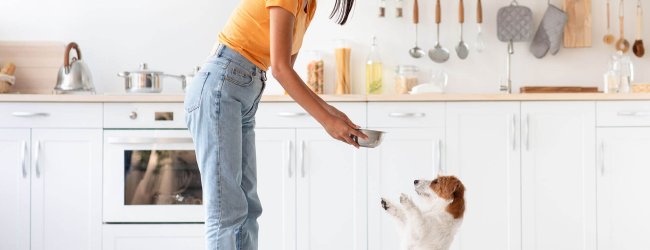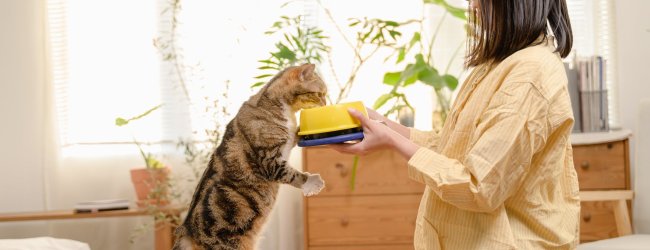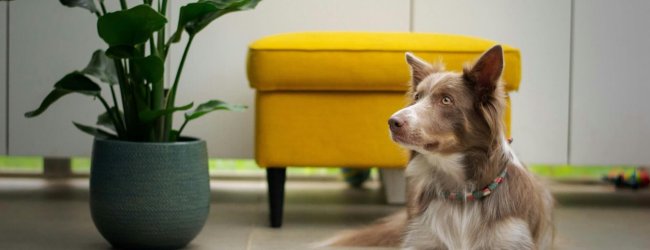What Can Cats Not Eat? (And Why Not?)
Here are a couple of common foods & ingredients you'll find in your kitchen - and why you should keep them away from your cat.
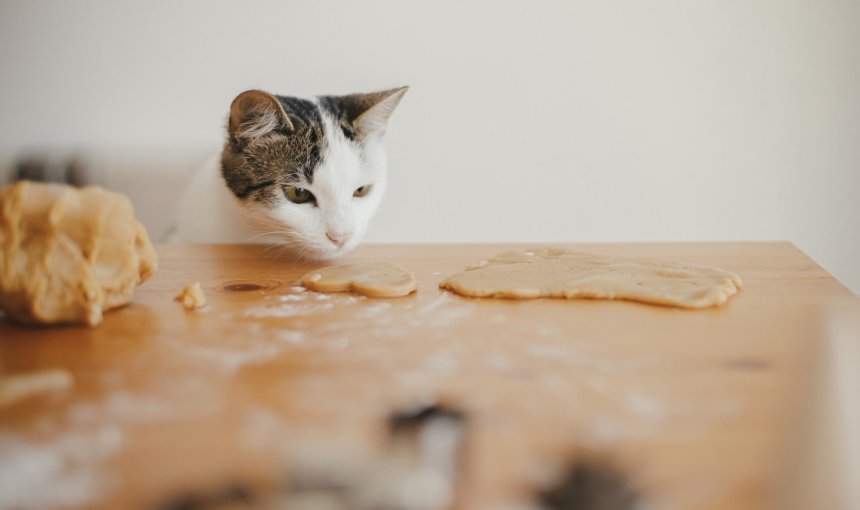
If you’ve ever wondered, “What can cats not eat?”, now’s a great time to stay informed. (Especially with holidays coming up and meal prep on full steam ahead.) Here’s a deep dive into what can’t cats eat, how you can prevent them from eating something unsafe, and what to watch out for if you suspect they have.
Key Takeaways
Since cats are “obligate carnivores,” their bodies are made to eat mostly meat. This means many common human foods can be toxic or harmful to them.
Most cats are lactose intolerant, so you should avoid giving them high-lactose foods like ice cream or whole milk, which can cause them to have an upset stomach.
Most cats are very good at hiding signs of pain or sickness. If you notice any changes in their behavior, like they are vomiting or are less active, you should call your vet right away.
You can use the Tractive smart cat collar to spot potential health issues early. The tracker’s Activity Monitoring features can help you spot if they become suddenly less active, which can be an early sign that they might have eaten something they shouldn’t have and need a trip to the vet.

Find out where your cat spends their time.
Read moreWhat can cats not eat?
Cats are obligate carnivores. This means their digestive systems are built primarily to absorb and break down meat from animal sources. (Which contain essential amino acids like taurine.) So let’s start with a bunch of ingredients and foods that are inherently unsafe for your cat to eat – and why:
- Chocolate
- Nuts
- Honey
- Alcohol
- Caffeine
- Most dairy products, including ice cream
- Certain fruits, like plums
- Certain vegetables, like onions
- Raw foods
- Deli meats
- Bones
- Dog food
Chocolate
Much like dogs, theobromine can be fatal to cats. Even a lick of your cake dish can lead them to experience tremors, seizures – or even death. To keep them safe, keep chocolate out of your cat’s reach at all times. Your cat might not be able to taste sweet foods – but their sense of smell can lead them to take a lick of foods that smell great, even if they’re not flavorful. It’s always better to be safe than sorry.
Nuts
In general, vets recommend you avoid giving nuts to your cat.1 Their small size can always lead to a choking hazard for them because of how cats’ throats and airways are built. If your cat sneaks a few nuts, don’t panic. It’s unlikely they’ll have a problem. But keep an eye out for signs of choking, stomach troubles, or a loss of appetite – and be sure to drop a call at your local vet immediately, if you notice any of these signs.
Alcohol
Most types of alcohol contain chemicals like ethanol that are (mostly) harmless to us – but highly toxic to your cat.2 In fact, even just a teaspoon of alcohol can poison them. Because cats’ bodies aren’t built to handle such chemicals, it might cause their liver and kidneys to go into overdrive. To keep your cat completely safe, make sure to keep alcohol-based products far away from them. These include common household cleaning products, dental products like mouthwash, and even the hand sanitizer in your bag.
Honey
Cats’ livers lack an important gene called glucokinase. This gene helps our bodies break down glucose and fructose which we usually find in sweet foods, like honey.3 So while your cat might be able to handle a tiny drop or two, avoid serving them honey in large amounts. It might upset their digestive system and lead to stomach pain and other gastrointestinal issues, including vomiting and diarrhea.
Caffeine
Caffeine from all sources can be toxic to your cat.4 (Meaning not just your morning cup of joe, but also from raw coffee grounds or even tea bags.) Your cat might experience an increased heart rate, tremors, seizures, breathing difficulties, or even hyperactivity. Get in touch with your vet immediately if you notice any of these signs.
Dairy products (like ice cream)
Most cats tend to be lactose intolerant. So their bodies can’t handle high-lactose foods like ice cream or even whole milk.5 Besides lactose, ice cream and milk also contain sugar in quantities much higher than what’s healthy for your cat. Which can lead to gastrointestinal issues, like diarrhea. On the other hand, low-lactose foods like cheese and yogurt are safe for your cat to consume in small amounts.
Certain fruits
Including:
- Plums, which contain cyanide in their seeds, stems, and leaves.
- Cherries, which are toxic to cats – especially their pits, stems, and leaves
- Grapes, which may cause acute kidney failure in cats if eaten in high amounts. (Along with a choking hazard.)
- Raisins, which are highly toxic to cats and might even cause toxicosis even in very small amounts.
⚠️ Be extra careful when chopping or peeling any fruits for your upcoming dessert or if you’re baking a pie. While one or two falling on the floor might not cause your cat any harm, you always want to ensure they’re not in danger either.
Certain vegetables
Including:
- Onions, which can be poisonous to cats if eaten in large quantities – or smaller quantities over time.
- Garlic, which is five times more poisonous than onions for cats.
- Leeks, which are toxic to both cats and dogs.
- Chives, which can lead to your cat developing anemia over time.
- Mushrooms, which might lead to your cat getting poisoned. (Especially wild mushrooms.) On the other hand, most store-bought mushrooms are safe for cats in small quantities.
Even if you’re just using it for flavoring, you’re best off keeping these veggies away from your cat altogether.
Raw foods
According to the Center for Veterinary Medicine (CVM), raw food of all kinds is inherently dangerous for your cat.6
- Raw meat, including chicken, can include harmful viruses and bacteria like E.Coli and salmonella. Which won’t just make your cat very sick, but might even be potentially deadly.
- Raw eggs, including egg whites, might also include potentially harmful bacteria. Besides, raw egg whites might even damage your cat’s system’s ability to absorb nutrients from their food.
- Raw fish, like sushi, can also include harmful bacteria – but might be safe in very small amounts. But we’d recommend avoiding it altogether, since it’s better to be on the safe side.
- Raw dough, which contains yeast. If your cat eats uncooked, yeasted dough, it can quickly lead to major gastrointestinal issues. Besides, uncooked yeast can expand in their stomach so rapidly that you’ll need to rush your cat to a vet to have it surgically removed!
One small exception to this rule is liver. Partially-cooked ground liver is safe for cats to eat in small portions. But make sure to keep your serving sizes small, as an excessive amount of liver can lead to your cat’s body overdosing from vitamin A.
Deli meats
Most deli meats (including ham, bologna, and salami) tend to be quite high in sodium and other nitrates. Besides, they’re more likely to contain additives and artificial preservatives that might harm your cat’s health in the long run. These artificial ingredients are also prime causes of cat food allergies.
So stick to lean, cooked meats like chicken or turkey without any added chemicals. Avoid smoked or processed meats, as they might overwhelm your cat’s digestive system.
Bones
For cats, vets recommend staying away from bones. These can damage your cat’s teeth and cause constipation and internal blockages. Besides, raw bones (much like raw meat) can also contain bacterias that are harmful to both cats and humans. So we’d recommend avoiding serving your cat cooked bones, as these might break in your cat’s mouth and damage their internal organs.
Dog food
Dog food is not a viable substitute for cat food. It might not be toxic for cats, but in the long run, it might cause your cat more harm than good due to the nutritional deficiencies. Dog food might lack the meat-based proteins, animal fats, and amino acids like taurine to keep cats healthy.7
Now that we’ve covered the question, what can cats not eat, let’s cover what signs might indicate that your cat might’ve eaten something they shouldn’t have.
Signs of food poisoning in cats
Much like us, cats might also mistakenly eat something they’ll regret after. (Often in the litter box.) So here are some of the signs and symptoms of food poisoning in cats to look out for:
- Loss of appetite
- Fever
- Diarrhea
- Vomiting
- Salivating or drooling
- Lethargy or overall weakness
- Coughing or sneezing
- Twitching or seizures
- Labored breathing
- Skin inflammation or swelling
- Abdominal pain (which might come out as hissing if you try and pick them up)
- Unsteady gait
- Excessive drinking
- Urinating outside the litter box
If your cat is showing one or more of these signs and generally seems poorly, drop by your local vet immediately. Go prepared with all the information you can find, including:
- What food your cat might have eaten
- How much of it they managed to eat
- Any other health conditions your cat might have
- Your cat’s regular diet and eating habits
How a smart cat tracker can help keep your cat safe
Does your cat have a neighborhood friend who slips them a saucer of milk? Or are they raiding a neighbor’s unsecured trash can? Here’s how Tractive’s location and health features can help you keep kitty safe:
- Real-time GPS tracking: If you notice your cat is gone longer than usual, you can follow their every step right on your phone. This is vital if you suspect they’ve gotten into something bad and you need to find them right now.
- Location History & Heatmap: From the mobile app, you can also look back at where your cat spends most of their time. If the tracker shows them spending hours near a specific porch or shed, that might be where they’re getting into unsafe food like chocolate, onions, or other toxic scraps. Knowing this lets you talk to your neighbors or secure that area.
- Activity and sleep tracking: Tractive learns what is normal for your cat. If they’ve eaten something that’s upsetting their stomach or making them sick, you might see big changes. They might be much less active, or they could be restless all night long because of discomfort.
- Health Alerts: If the tracker notices a sudden, big change in their activity or sleep, you’ll get an immediate Health Alert on your phone. This alert tells you something is wrong and prompts you to check on your cat, even if they aren’t showing obvious signs like vomiting yet. This early warning can make a huge difference in getting them to the vet quickly if they’ve ingested something poisonous.
